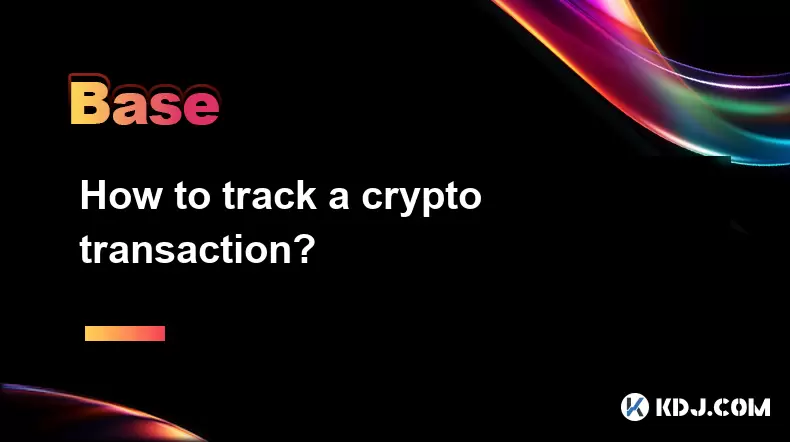-
 Bitcoin
Bitcoin $117400
-0.46% -
 Ethereum
Ethereum $3768
0.60% -
 XRP
XRP $3.551
2.09% -
 Tether USDt
Tether USDt $1.000
0.00% -
 Solana
Solana $203.2
11.30% -
 BNB
BNB $770.9
1.92% -
 USDC
USDC $0.9999
0.01% -
 Dogecoin
Dogecoin $0.2709
-0.02% -
 Cardano
Cardano $0.9024
4.49% -
 TRON
TRON $0.3139
0.60% -
 Hyperliquid
Hyperliquid $45.60
-1.41% -
 Stellar
Stellar $0.4730
-1.34% -
 Sui
Sui $4.025
2.15% -
 Chainlink
Chainlink $19.79
2.19% -
 Hedera
Hedera $0.2724
-2.39% -
 Avalanche
Avalanche $25.93
3.05% -
 Bitcoin Cash
Bitcoin Cash $524.0
-1.83% -
 Shiba Inu
Shiba Inu $0.00001558
0.50% -
 Litecoin
Litecoin $116.7
-0.30% -
 UNUS SED LEO
UNUS SED LEO $8.996
0.00% -
 Toncoin
Toncoin $3.334
1.83% -
 Polkadot
Polkadot $4.506
0.34% -
 Uniswap
Uniswap $10.99
4.83% -
 Ethena USDe
Ethena USDe $1.001
0.03% -
 Pepe
Pepe $0.00001461
3.17% -
 Monero
Monero $320.3
-1.01% -
 Bitget Token
Bitget Token $4.935
0.36% -
 Dai
Dai $0.9998
0.00% -
 Aave
Aave $322.4
-1.25% -
 Bittensor
Bittensor $455.6
9.33%
How to track a crypto transaction?
You can track a crypto transaction using its unique transaction hash (TXID) on a blockchain explorer like Etherscan or Blockchain.com.
Jul 19, 2025 at 11:56 pm

Understanding the Basics of Blockchain Transactions
Tracking a crypto transaction begins with understanding how blockchain transactions work. Each transaction on a blockchain is recorded in a block and added to a chain of blocks, hence the name blockchain. These transactions are immutable, meaning once recorded, they cannot be altered. Every transaction hash serves as a unique identifier, allowing users to look up and verify the details of a specific transfer.
Unlike traditional banking systems, cryptocurrency transactions are transparent and publicly accessible through blockchain explorers. These tools allow anyone to search for transactions, addresses, and blocks on the blockchain. This transparency is a key feature of decentralized networks, enabling trustless verification without relying on a central authority.
Choosing the Right Blockchain Explorer
To track a crypto transaction, you'll need to use a blockchain explorer compatible with the blockchain on which the transaction occurred. For example:
- Bitcoin (BTC) transactions can be tracked using blockchair.com or blockchain.com
- Ethereum (ETH) uses etherscan.io
- Binance Smart Chain (BNB) uses bscscan.com
- Litecoin (LTC) can be tracked via blockchair.com/litecoin
Each blockchain has its own explorer, and it’s crucial to use the correct one. Using the wrong explorer will not yield results, as blockchains are separate and incompatible with each other unless bridged.
Locating the Transaction Hash
To begin tracking a transaction, you must have the transaction hash (TXID). This is a unique alphanumeric string generated when a transaction is broadcast to the network. You can find this hash in:
- Wallet confirmation emails
- Exchange transaction details
- Payment receipts from merchants
Once you have the transaction hash, copy it and paste it into the search bar of the appropriate blockchain explorer. This will take you directly to the page displaying the transaction details.
Interpreting Transaction Details
After entering the transaction hash, the explorer will display detailed information, including:
- From address: The sender’s wallet address
- To address: The recipient’s wallet address
- Amount transferred: The value of the cryptocurrency sent
- Transaction fees: The cost paid to miners or validators
- Number of confirmations: Indicates how many blocks have been added after the transaction was included
The number of confirmations is important because it shows how secure the transaction is. Most services require 3 to 6 confirmations for Bitcoin and 12 to 30 confirmations for Ethereum before considering a transaction final.
Tracking Multi-Signature and Smart Contract Transactions
Some transactions, especially those involving multi-signature wallets or smart contracts, may appear more complex. In these cases, the transaction may involve multiple steps or interactions with decentralized applications (dApps).
For smart contract interactions, such as token transfers or DeFi transactions, the transaction details will show contract calls and internal transactions. These can be viewed under tabs like "Logs" or "Internal Transactions" on explorers like Etherscan. It’s important to analyze these logs to understand what functions were executed and whether the transaction succeeded or failed.
Using Advanced Tools for Deeper Analysis
Beyond basic explorers, advanced tools like blockchair.com, bloxy.info, and glassnode.com offer analytics and deeper insights into blockchain activity. These platforms can help you:
- Monitor wallet balances and transaction history
- Track token movements across multiple chains
- Analyze on-chain behavior and market trends
These tools are especially useful for developers, investors, and investigators who need to verify large transfers, audit transactions, or detect suspicious activity.
FAQs
Q: Can I track a crypto transaction without a transaction hash?
A: No, the transaction hash (TXID) is essential for tracking. Without it, you won’t be able to pinpoint the exact transaction on the blockchain.
Q: What if the transaction doesn’t show up on the explorer?
A: Double-check that you’re using the correct blockchain explorer and that the hash is entered correctly. If the transaction is still not visible, it may still be pending in the mempool and hasn’t been confirmed yet.
Q: Is it possible to reverse a tracked transaction?
A: No, blockchain transactions are irreversible once confirmed. There is no central authority to roll back transactions, which is why accuracy is crucial when sending funds.
Q: Can I track transactions across different blockchains?
A: Not directly. Each blockchain is independent. However, cross-chain bridges or multi-chain explorers like blockchair.com can help you track transactions across multiple chains separately.
Disclaimer:info@kdj.com
The information provided is not trading advice. kdj.com does not assume any responsibility for any investments made based on the information provided in this article. Cryptocurrencies are highly volatile and it is highly recommended that you invest with caution after thorough research!
If you believe that the content used on this website infringes your copyright, please contact us immediately (info@kdj.com) and we will delete it promptly.
- XRP, Bitcoin, Ripplecoin: Navigating the Crypto Landscape in 2025
- 2025-07-22 20:30:13
- Cardano Ecosystem Watch: Can PayFi Token Remittix Trigger an ADA Overtake?
- 2025-07-22 20:50:13
- JasmyCoin Price Forecast: Chart Analysis Points to Potential Surge
- 2025-07-22 20:55:13
- Remittix, XRP, and Dogecoin: What's Hot in the Crypto Game Right Now?
- 2025-07-22 20:10:14
- BlockchainFX, PEPE, and USDT: What's the Buzz in the Crypto Jungle?
- 2025-07-22 18:50:12
- Ripple's RLUSD: Institutional Backing Fuels Stablecoin Ascent
- 2025-07-22 18:30:12
Related knowledge

What is the difference between CeFi and DeFi?
Jul 22,2025 at 12:28am
Understanding CeFi and DeFiIn the world of cryptocurrency, CeFi (Centralized Finance) and DeFi (Decentralized Finance) represent two distinct financia...

What is the difference between a sidechain and a Layer 2?
Jul 20,2025 at 11:35pm
Understanding the Concept of SidechainsA sidechain is a separate blockchain that runs parallel to the main blockchain, typically the mainnet of a cryp...

What is the Inter-Blockchain Communication Protocol (IBC)?
Jul 19,2025 at 10:43am
Understanding the Inter-Blockchain Communication Protocol (IBC)The Inter-Blockchain Communication Protocol (IBC) is a cross-chain communication protoc...

How does sharding improve scalability?
Jul 20,2025 at 01:21am
Understanding Sharding in BlockchainSharding is a database partitioning technique that is increasingly being adopted in blockchain technology to enhan...

What is the "crypto trilemma" of scalability, security, and decentralization?
Jul 19,2025 at 06:28pm
Understanding the Concept of the Crypto TrilemmaThe crypto trilemma refers to the challenge of simultaneously achieving scalability, security, and dec...

What is a cliff and vesting schedule in tokenomics?
Jul 20,2025 at 10:28am
What Does a Cliff Mean in Tokenomics?In tokenomics, a cliff refers to a specific period during which token holders are not allowed to access or transf...

What is the difference between CeFi and DeFi?
Jul 22,2025 at 12:28am
Understanding CeFi and DeFiIn the world of cryptocurrency, CeFi (Centralized Finance) and DeFi (Decentralized Finance) represent two distinct financia...

What is the difference between a sidechain and a Layer 2?
Jul 20,2025 at 11:35pm
Understanding the Concept of SidechainsA sidechain is a separate blockchain that runs parallel to the main blockchain, typically the mainnet of a cryp...

What is the Inter-Blockchain Communication Protocol (IBC)?
Jul 19,2025 at 10:43am
Understanding the Inter-Blockchain Communication Protocol (IBC)The Inter-Blockchain Communication Protocol (IBC) is a cross-chain communication protoc...

How does sharding improve scalability?
Jul 20,2025 at 01:21am
Understanding Sharding in BlockchainSharding is a database partitioning technique that is increasingly being adopted in blockchain technology to enhan...

What is the "crypto trilemma" of scalability, security, and decentralization?
Jul 19,2025 at 06:28pm
Understanding the Concept of the Crypto TrilemmaThe crypto trilemma refers to the challenge of simultaneously achieving scalability, security, and dec...

What is a cliff and vesting schedule in tokenomics?
Jul 20,2025 at 10:28am
What Does a Cliff Mean in Tokenomics?In tokenomics, a cliff refers to a specific period during which token holders are not allowed to access or transf...
See all articles

























































































